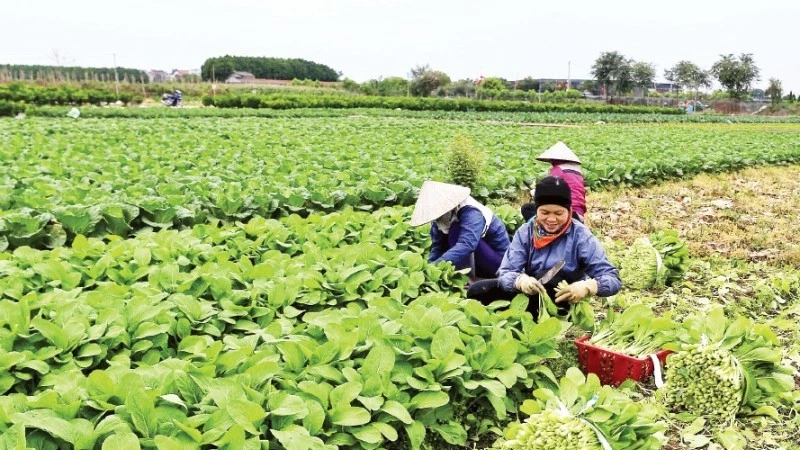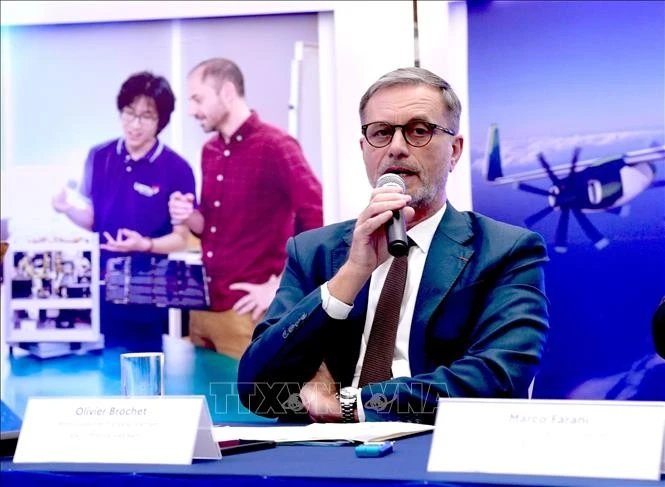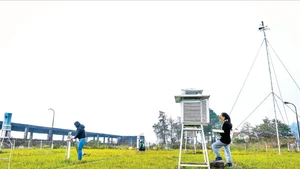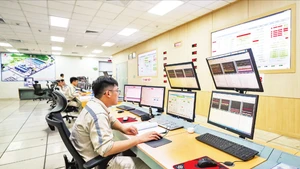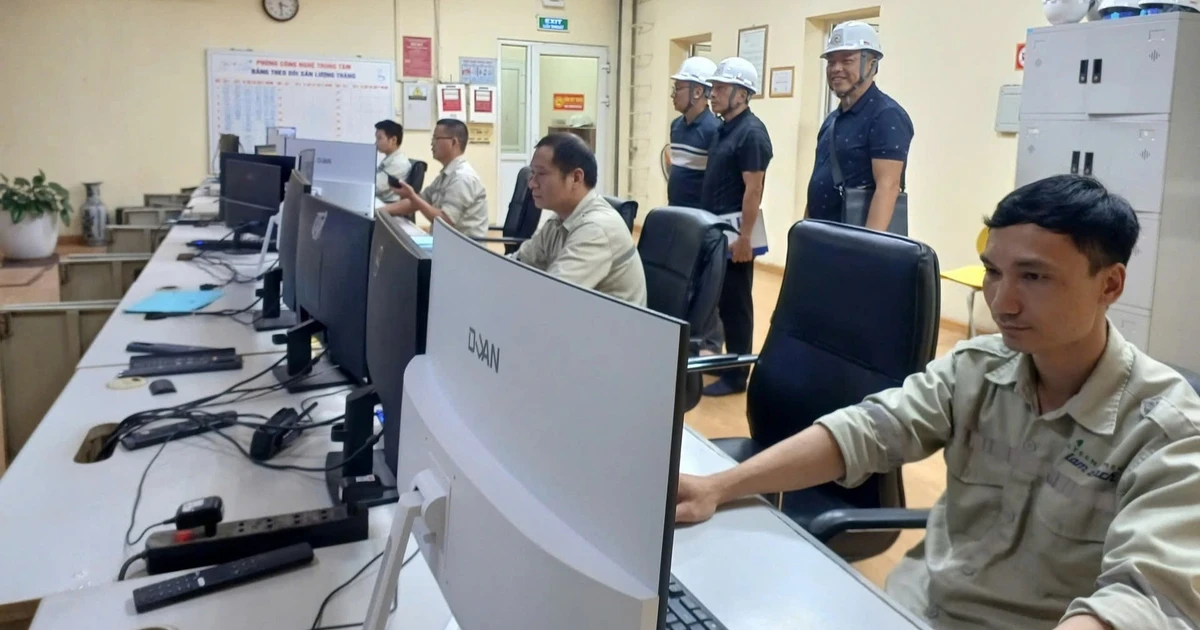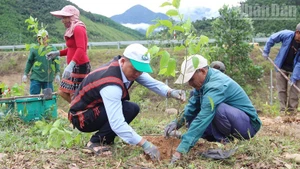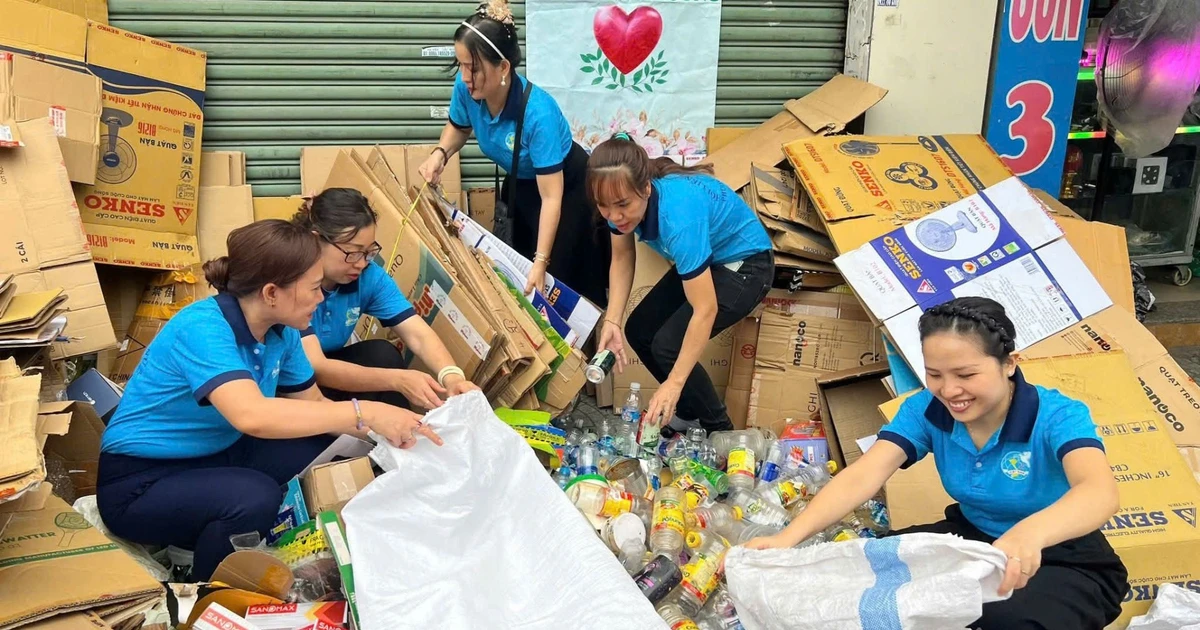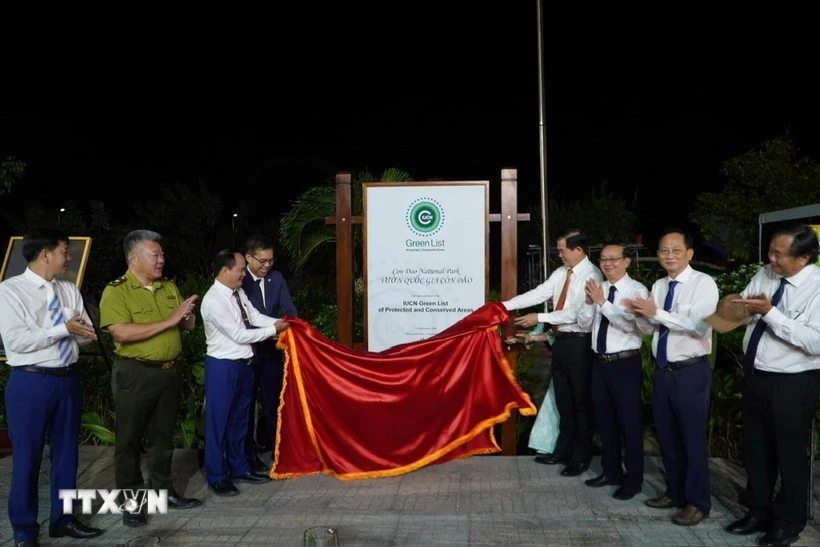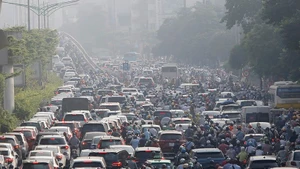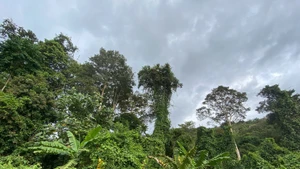Mastering a professional process
Dao Cong Quy, from Viet Yen commune (Hung Yen province), shared that more than ten years ago, when the cooperative first introduced the VietGAP cultivation process, local farmers were hesitant, especially about having to carry a notebook to record their daily “diary”.
However, after receiving hands-on guidance, they realised that producing under VietGAP is not difficult; the main challenge is changing habits. This change means farmers must actively control their own processes. For example, shifting from spraying pesticides based on experience and intuition to spraying at the correct time, in the correct dosage and concentration, and ensuring the proper interval before harvest.
As for record-keeping, some people were reluctant at first, but after a few seasons, everyone recognised its benefits. Keeping a diary not only helps control the cultivation process and trace origin, but also allows precise calculation of input costs, the impact of pests and diseases, and weather patterns, helping to draw lessons for future crops.
Nguyen Thi Luyen, Director of Tu Nhien Safe Vegetable Cooperative, Moc Son Ward (Son La Province), said farmers often worry that VietGAP procedures are complicated, but in reality only the first year is difficult while adapting to a new process; from the second year onward, everything falls into place.
In particular, over the past five years, cultivating under VietGAP has become simpler thanks to the application of technology. Cooperative members use smartphones to photograph materials, record pests and diseases, and save data into the system quickly.
The cooperative’s management can easily monitor and promptly issue production instructions. Mastering the VietGAP process has helped members ensure transparent production information and establish credibility in the market.

With 25ha of vegetables, the cooperative supplies around three tonnes of produce daily to supermarkets, clean-food stores and school canteens in many provinces and cities. As selling prices are 20–30% higher than traditionally grown vegetables, the cooperative’s 35 member households enjoy stable income and are confident in pursuing agriculture.
According to the Department of Crop Production and Plant Protection of the Ministry of Agriculture and Environment, applying GAP procedures brings many benefits, helping produce high-quality agricultural goods that ensure food safety and contribute to reducing soil, water and air pollution.
At the same time, GAP helps preserve ecosystems and use resources more efficiently by applying biological measures and resource-saving cultivation techniques.
In addition, this scientific production process helps farmers reduce input costs by limiting the use of agricultural materials such as fertilisers and pesticides.
Reaching its full potential
Although initiated in 2008, by 2023 the total area of GAP-based vegetable production nationwide reached only nearly 8,400 ha out of 1.15 million ha of vegetables. Even with four production cycles per year, this proportion accounts for just 2.8–3%.
Dang Phuc Nguyen, Secretary General of the Viet Nam Fruit and Vegetable Association, said Viet Nam faces a significant shortage of safe vegetables that meet standards and certification.
Demand for high-quality agricultural products is highest in major cities such as Ha Noi and Ho Chi Minh City, and modern distribution channels are expanding rapidly. In addition, Viet Nam’s fruit and vegetable sector has achieved impressive export growth, targeting 10 billion USD.
To meet domestic demand for safe produce and serve export needs, the standardisation of raw-material zones under GlobalGAP or VietGAP is extremely important. To produce clean, quality food, the foundation must begin with production.
Nguyen Hong Nhat, Deputy Director of the Ha Noi Agricultural Product Quality Analysis and Certification Centre, said one of the biggest challenges for VietGAP is the instability of the consumption market. Currently, only a small share of produce reaches supermarket systems; most is still sold at wholesale and traditional markets.
In these channels, VietGAP products are often forced down in price by traders, resulting in unstable prices. Furthermore, selling in markets or to intermediaries makes VietGAP produce barely higher in price than traditionally grown vegetables.
Therefore, it fails to create a strong incentive for producers. At the same time, consumers have yet to fully understand or trust VietGAP products, leading to limited purchasing power.
In addition, Nguyen Do Ban, Director of Huong Ngai Agricultural Cooperative (Tay Phuong Commune, Ha Noi), said the initial investment costs for GAP models are high, including certification, maintaining standards, building net houses, installing efficient irrigation systems, storage facilities and post-harvest equipment. These financial burdens make it difficult for small-scale producers to adopt GAP.
Moreover, fragmented and small-scale production remains a major obstacle, making it difficult to apply GAP synchronously, ensure traceability and generate sufficient volume to sign contracts with partners.
Huynh Tan Dat, Director of the Department of Crop Production and Plant Protection (Ministry of Agriculture and Environment), said that expanding GAP-based vegetable production requires coordinated direction and solutions from authorities, localities, producers and enterprises.
First, the State should consider supporting the reduction of VietGAP certification costs and provide preferential credit packages for farmers to invest in net houses, irrigation systems and storage facilities. At the same time, market control mechanisms should be strengthened to prevent fraudulent “fake VietGAP” products, thereby enhancing consumer trust.
Localities should also plan concentrated production zones, invest in infrastructure, strengthen technical training, and promote the establishment of cooperatives, helping farmers apply GAP procedures synchronously.
At the same time, support is needed to connect producers with enterprises, supermarkets and collective kitchens to ensure stable output for products.
